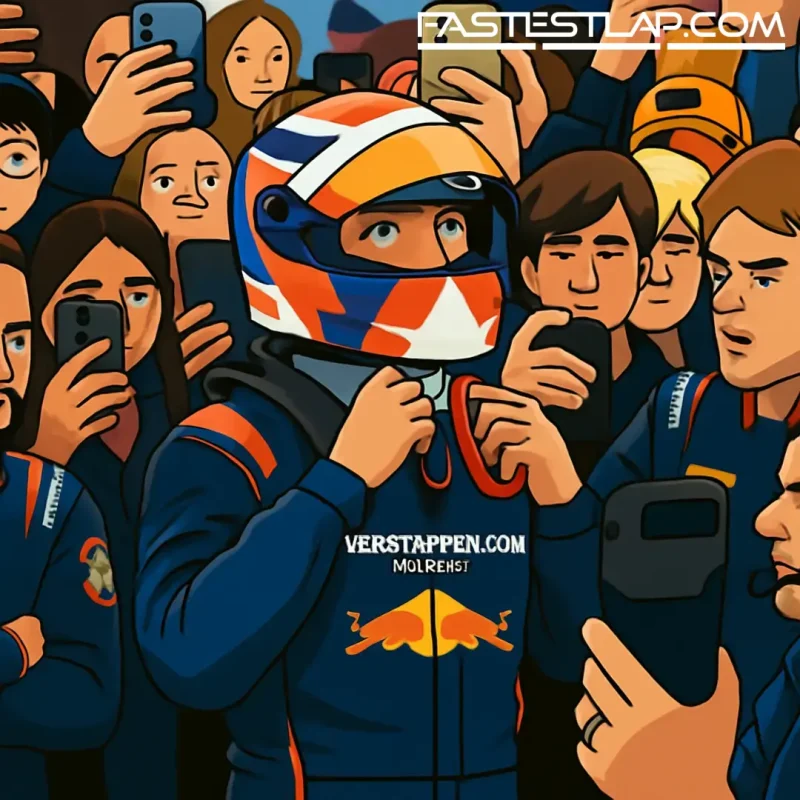Max Verstappen’s Nürburgring detour: pure joy, pure risk, pure Max
Max Verstappen doesn’t really do “quiet weekends.” While most of the paddock was catching its breath between races, the Red Bull star went and lit up the Nürburgring Nordschleife in a Ferrari GT3 car, qualified for Permit A, started his first GT3 race on the third row, sliced to the front like it was karting at Genk, built a near-minute lead and handed the car to teammate Chris Lulham to close out the win. Efficient. A little audacious. Very Verstappen.
Red Bull, crucially, didn’t flinch. Helmut Marko, never shy of a big call, framed the whole thing as a driver indulging his craft rather than dodging his day job. “It’s great that a Formula 1 driver, who has many obligations besides racing – simulator, marketing and PR – still takes the time for something like this with such enthusiasm,” he told RTL. The Nordschleife, he said, “fascinates every racer.” When Red Bull’s machinery wasn’t at its sharpest, he added, it was Verstappen’s “great passion.” Now both are working.
It’s a neat line and an honest one. Verstappen drives because he loves driving. Always has. But the rest of the pit lane watched the GT3 heroics through a narrower lens: risk.
Because this isn’t Verstappen dropping in for a karting demo or a tidy sim outing. It’s the Green Hell. June’s awful incident at Schwedenkreuz was a reminder that the Ring doesn’t forgive. No matter how good you are, no matter how bulletproof your confidence is, motorsport’s most romantic ribbon of tarmac still bites. And that’s where the conversation turns.
Sky F1’s Bernie Collins, whose risk antenna is well tuned from her days calling strategy at Aston Martin, summed up the unease. Teams ban skiing, snowboarding, mountain biking over the winter. They can live without a sprained wrist. The Nordschleife in a fast GT3 car? “Motorsport is dangerous,” she said, before floating the obvious hypothetical: if Verstappen were neck-and-neck in the title fight — or Red Bull locked in a Constructors scrap — would the team feel the same way?
Karun Chandhok didn’t dance around it. If it were McLaren — with Lando Norris and Oscar Piastri both right in a championship picture — “absolutely, it’s not worth the risk.” And yet he also made the point teams have wrestled with for years: certain drivers tick louder when they’re constantly in the car. Fernando Alonso. Verstappen. Even Lewis Hamilton was, at his peak, protected by the idea that a happy driver is a faster driver. The trick is knowing your athlete and playing the risk-reward game with a cold head and a warm heart.
Verstappen’s case is unique because Verstappen is unique. He’s a generational talent in a very strong position at Red Bull, and the organization has always operated a little differently with him. The team trusts that he’ll show up to the next grand prix as sharp as ever. He trusts himself to go to the limit and come back. And, frankly, Red Bull knows what it gets by allowing him to be himself: an utterly engaged, relentlessly competitive leader who looks for speed anywhere he can find it.
If you’re McLaren in a tight fight with two drivers in the mix, you probably make the opposite calculation. You clamp down hard, you keep the variables down to the smallest number possible, and you live with the eye rolls in the drivers’ room because it’s your job to bring both cars — and both drivers — to Sunday afternoon with no outside noise. Different teams, different realities.
What Verstappen did at the Ring looked effortless, but it actually underlined how thin the margins are. Building a 62-second cushion around the Nordschleife isn’t just bravado; it’s a showcase of craft and mechanical sympathy, of reading traffic and trusting the car on the bumps and blind crests that have spooked better drivers. It told you that even away from the F1 paddock, he’s still living in that rarefied space where rhythm, risk and reward add up.
Will he be back for more? He’s teased it. And if the calendar and the team allow, don’t be surprised when he is. The sport’s biggest stars sometimes need these side quests — the kind that wake the senses and reset the needle — to stay sharp when the next qualifying session rolls around.
Here’s the real question for the rest of the grid: would you let your title contender do the same? Red Bull says yes, at least for Max Verstappen. Most of the field would say no. And somewhere between those two answers lives the reality of modern F1: the line between freedom and control isn’t just philosophical. It’s lap time.




